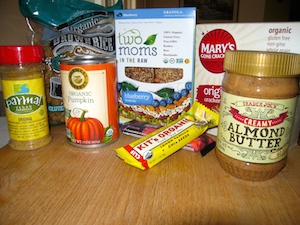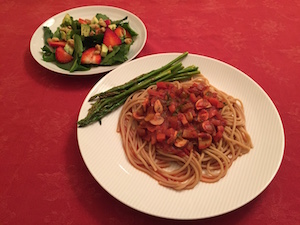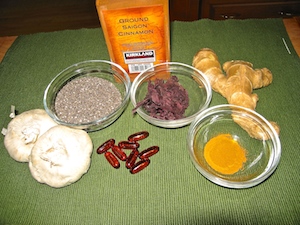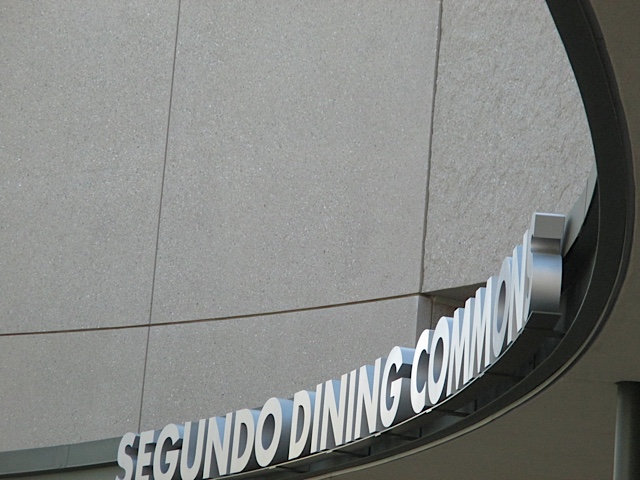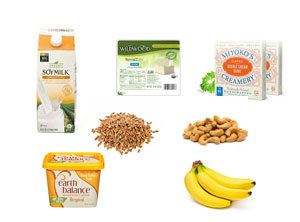
Plant-based, vegan cooking – substitutions for milk, eggs and more
One of the fun adventures in transitioning to a whole food, plant-based (WFPB) vegan lifestyle is experimenting in the kitchen by learning how to modify recipes. Here are some suggestions to get you started.
Milk
- Instead of using cow’s milk in recipes, simply substitute plant milk such as almond, coconut, hemp, or soy in a 1:1 ratio.
- You can also make your own cashew milk by combining 1 cup cashews with 4 cups water in a high speed blender, such as a Vitamix. For best results, soak the cashews in water for 4 hours or overnight prior to blending.
- You can use this same recipe for making almond milk, but you’ll definitely need to soak the almonds overnight and then strain through a nut bag.
Buttermilk
- Add 1 Tablespoon apple cider vinegar to 1 cup non-dairy milk
Cream
- Cashews also make a great cream substitute. Just use less water than when making milk. Mix 1 cup cashews with 1/4 to 1/2 cup water and blend. Start with less water and add more until you get your desired consistancy. You can add a sweetener such as maple syrup, a bit of sea salt and natural vanilla extract to add flavor and sweetness.
Sour cream
- Use plain soy yogurt instead of sour cream
Butter
- Use olive oil or coconut oil instead of butter, or buy a vegan butter such as Earth Balance. It uses organic (non-GMO) palm fruit, soybean, canola and olive oils.
- You can also use almond butter instead of oil or butter when baking cookies.
Mayonnaise
- Try vegan mayonnaise such as Hampton Creek’s Just Mayo which uses non-GMO expeller-pressed canola oil, lemon juice and white vinegar as key ingredients.
- You can also use a mashed avocado or guacamole, hummus or baba ganoush on sandwiches instead of mayo.
Cheese
- Use nutritional yeast flakes instead of cheese in recipes such as risotto.
- Tofu is also a great substitute for ricotta cheese in lasagne. I like to blend soft tofu in the food processor with a bit of fresh spinach, garlic and onion powder plus salt and pepper for a tastey ricotta.
- There are some fantastic vegan cheeses that are coming onto the market. Recently I tried Miyoko’s Creamery Double Cream Chive cheese which is made from organic, non-GMO cashews, coconut oil, chives, chickpea miso and other ingredients. It is wonderful as an appetizer served with crackers or a sliced baquette, grapes or apple slices.
Eggs
- In baking, good egg substitutes include banana, applesauce, or soft tofu.
- You can also use ground flax or chia seeds. Mix 1 Tablespoon ground seeds with 2 Tablespoons water and let sit for a bit.
- You can also buy Ener-G Egg Replacer which is made from potato starch, tapioca flour and levening agents.
- For making scrambled eggs, substitute tofu, such as in our tofu scramble recipe. You can also use tofu in quiches and custard and eggless “egg salad” sandwiches.
Gelatin
- Chia seeds make a great gelatin and puddings. See our recipes for a chia breakfast pudding and chia and coconut milk dessert pudding.
- Agar, made from algae, is a great gelatin substitue as well and is used predominently in Asia for jellies, desserts and as a thickener in soups.
Stock / Broth
- For soups or making risotto, use a vegetable broth instead of chicken or beef stock
So have fun experimenting with your favorite recipes and let us know if you have other tips or suggestions for vegan substituions.

